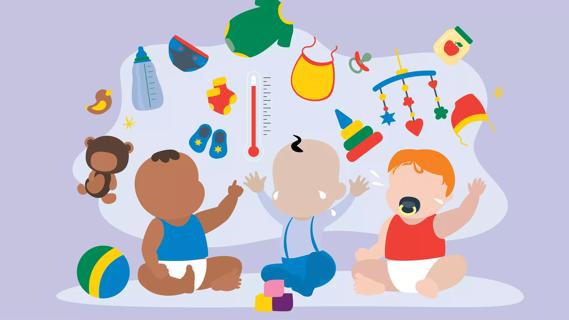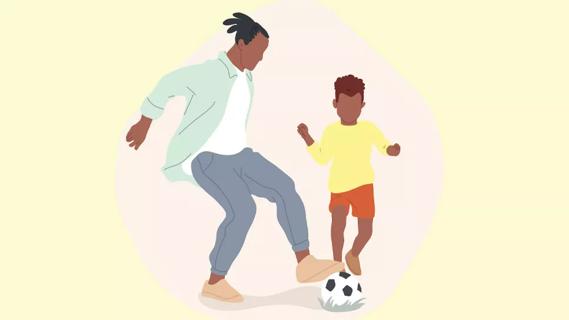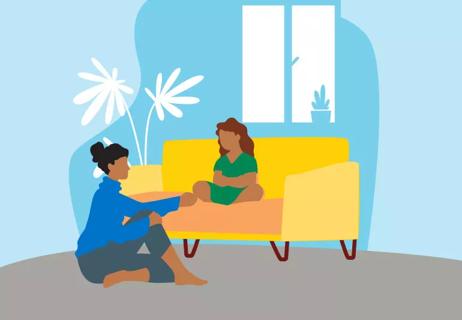Hydration and sleep are as important as avoiding dirty surfaces

Kids are a veritable source of germ spreaders. A 2015 year-long study of 26 households discovered the younger your kids are and the more kids you have, the higher your chances for acquiring infections and the longer you run the risk of being sick. Kids who were under 5 spent 50% of the year with at least one respiratory virus. And households with six kids spent 87% of the year with one or more viral infections, compared to only 7% of the year for households without kids.
Advertisement
Cleveland Clinic is a non-profit academic medical center. Advertising on our site helps support our mission. We do not endorse non-Cleveland Clinic products or services. Policy
These alarming numbers make it seem like illness is inevitable if you still have little ones in the coop, especially when you consider the late-summer surges of RSV affecting kids and older adults alike. But there are some useful barriers you can put in place and helpful rules you can implement to reduce the spread of germs and the likelihood for infection.
Pediatric psychologist Emily Mudd, PhD, provides six tips for keeping your kids safe from sickness.
Because of the COVID-19 pandemic, we’ve learned it’s still important to keep kids home from school, play dates and day care when they show signs or symptoms of any illness. This prevents them from picking up any further bugs while their immune system is already compromised, and simultaneously protects everyone else from getting those same germs.
“Nearly all children can remember being sick at some point in their lives, and germs are something that most children can understand the concept of,” says Dr. Mudd. “Start a discussion with your child about how germs are very tiny and when they enter our bodies, they make us sick.”
Explaining how the germs that cause COVID-19 don’t always make us sick even as we’re spreading them can also help them understand the importance of germ awareness.
Advertisement
Your kids should be washing their hands every time they go to the bathroom, when they’re finished eating, anytime they’re exposed to dirt or other substances and every time they come in from outside to help stop the spread of germs.
As it’s hard to sometimes get kids to slow down and focus on important tasks like handwashing between activities, it can be helpful to have them sing a song, like the ABCs or “Twinkle, Twinkle, Little Star,” while washing. You can also let your child pick out their favorite soap and use a sticker chart and reward them when they wash their hands a certain number of times.
“Playing a handwashing game or singing a favorite song is a great form of distraction for children that involves redirecting their attention from a less desirable task (like handwashing) to a more preferred task (playing, singing),” suggests Dr. Mudd. “Distraction can be a great technique to encourage positive behavior in children of all ages.”
It can be hard for little kids to resist touching things. They can’t help it. And while it might seem annoying, Dr. Mudd says it’s normal.
“Kids explore their world through touch. If you think about babies, they’re putting everything in their mouths, and that’s how they explore the world around them,” she says. “It’s developmentally appropriate.”
To better help your child understand that they should avoid touching things (like public toilets or trash on the ground), Dr. Mudd suggests avoiding giving in to anger and being more direct about your expectations.
“If your child touches a toilet in a public space and you respond with a lot of anxiety and say something like ‘NO! Don’t touch it! That’s dirty, it will make you sick,’ your child will match your anxious response, and with children, anxiety often shows up as misbehavior, or continuing to do the exact thing you asked them not to” says Dr. Mudd.
“Instead, remain calm and say something like, ‘Remember, right now we’re trying to stay away from germs. If you feel like touching something, you can hold my hand,’ and end the conversation.”
And to get them to stop touching their face so often, perhaps take a more creative approach.
“Children learn through play,” she continues. “We know avoiding the urge to touch your face is a hard thing for adults and children to do, as it happens unconsciously the majority of the time. So, get some face paint and make it a game.”
Put some paint on your face and some on your child’s face and let it sit for a 10-minute competition to determine who touches their face the least. When the timer goes off, you can compare the amount of paint left on both of your faces.
Advertisement
“This can help a child see how often they’re touching their face,” she says.
Sleep is perhaps one of the most important elements of boosting your child’s immune system and its ability to fight off germs. When we sleep, our bodies conserve enough energy to fight off infection, and that downtime allows our bodies to heal. Making sure you keep regularly scheduled nap breaks or consistent bedtimes every night can go a long way to helping your kid develop a healthy body.
“If your child struggles with sleeping transitions and routines, it can be helpful to give them a job to do, to allow some control in the situation,” recommends Dr. Mudd. “For example, every day before nap, have your child tuck in their dolls or superheroes. It’s also helpful to give as many age-appropriate choices as possible.”
Some examples include having them decide between wearing pink or green pajamas, or choosing to brush their teeth before or after they have a bath.
“This helps your child feel more in control of the bedtime routine, and having a choice makes it more likely they will feel excited for the sleep time transition,” she adds.
In the digital age, it can be hard to convince your kids to go outside, but it’s an important facet to a child’s development. For starters, exercise and physical activity are keys to developing strong, healthy bodies that can fight off infections. But germs are also less concentrated in wide outdoor spaces — even in the winter.
Advertisement
“There is significant research that demonstrates spending time outdoors is beneficial for children’s social, emotional, and cognitive development for all ages,” shares Dr. Mudd. “It’s also easier to social distance outside — so it’s beneficial as well when trying to reduce contact with germs during highly infectious seasons.”
The more active your child is, and the more time they spend outside during the summer, the more important it becomes for your kids to have access to water and nutrition. Hydration is key to a healthy immune system, and your body needs nutrients to stay strong. Replacing processed snack foods with hydrating foods like cucumbers, celery and fruits can add additional benefits between meals alongside 100% fruit juice and just plain old water.
“The best way to make mealtime fun with your kids is to sit and eat with them. Children thrive when spending undivided attention time with their parents,” says Dr. Mudd. “It also helps to serve a ‘safe’ food with every meal, meaning a food you know your child likes and will eat, along with new fruits or vegetables that maybe they haven’t tried yet.”
With a little extra attention, education, patience and practice, you and your little ones can create healthy habits to last a lifetime.
Advertisement
Learn more about our editorial process.
Advertisement

By disrupting a child’s ability to think and act for themselves, snowplow parents run the risk of delaying their child’s ability to learn

It’s important to share the news in an honest and age-appropriate way and to open the lines of communication going forward

The need for sleep often takes a back seat for teens, but they need eight to 10 hours of sleep to stay mentally healthy, strengthen their brains and prevent injury

Early weight gain can lead to health issues like heart disease, diabetes and cancer

You can help strengthen your child’s immune system by focusing on hand washing and staying up-to-date on their vaccines

Severe and debilitating headaches can affect the quality of your child’s life

Build a lifestyle focused on smart eating and exercise, not numbers on a scale

Kids are never too young to learn about body autonomy

If you’re feeling short of breath, sleep can be tough — propping yourself up or sleeping on your side may help

If you fear the unknown or find yourself needing reassurance often, you may identify with this attachment style

If you’re looking to boost your gut health, it’s better to get fiber from whole foods